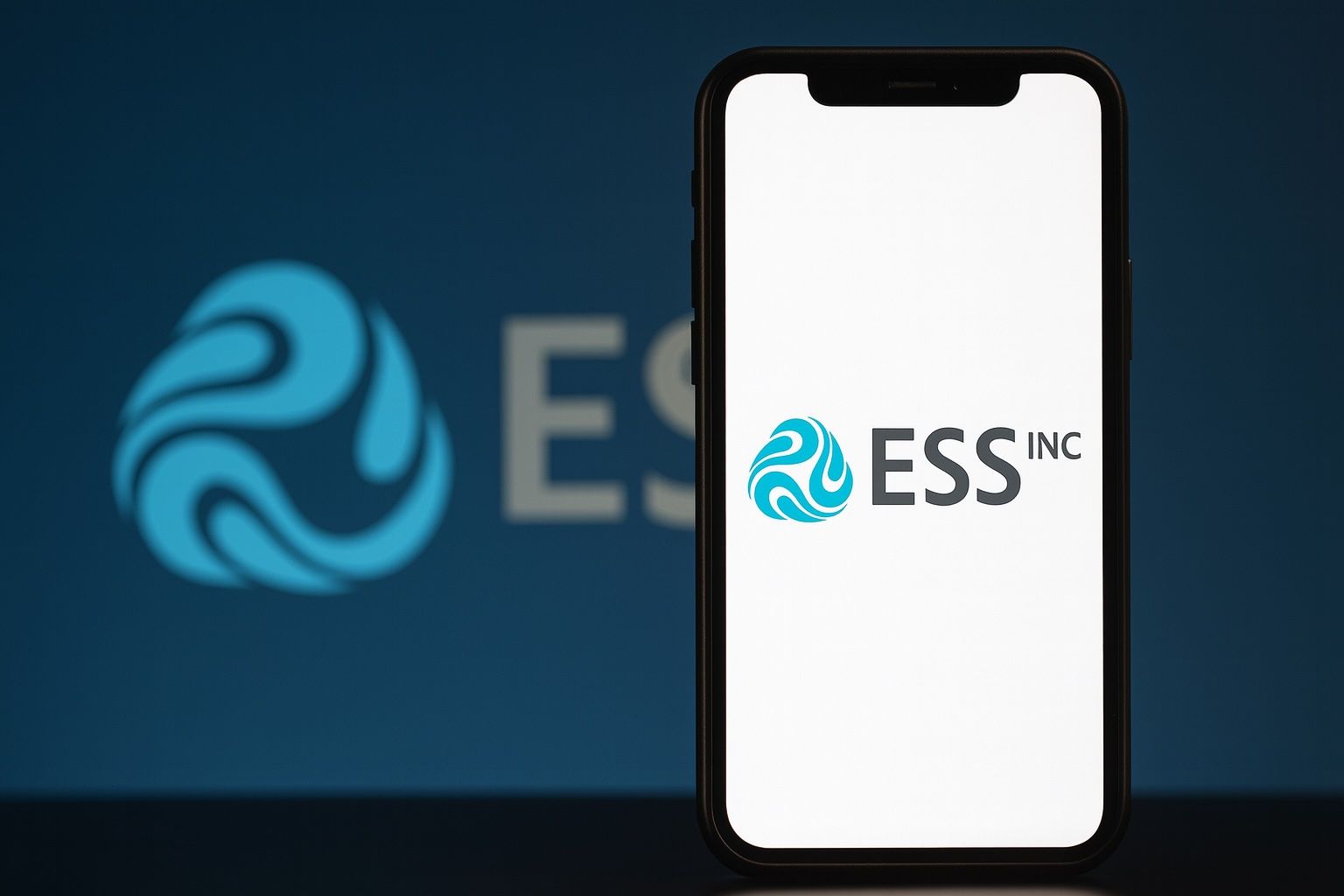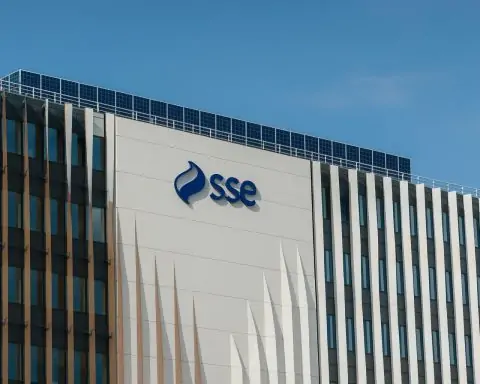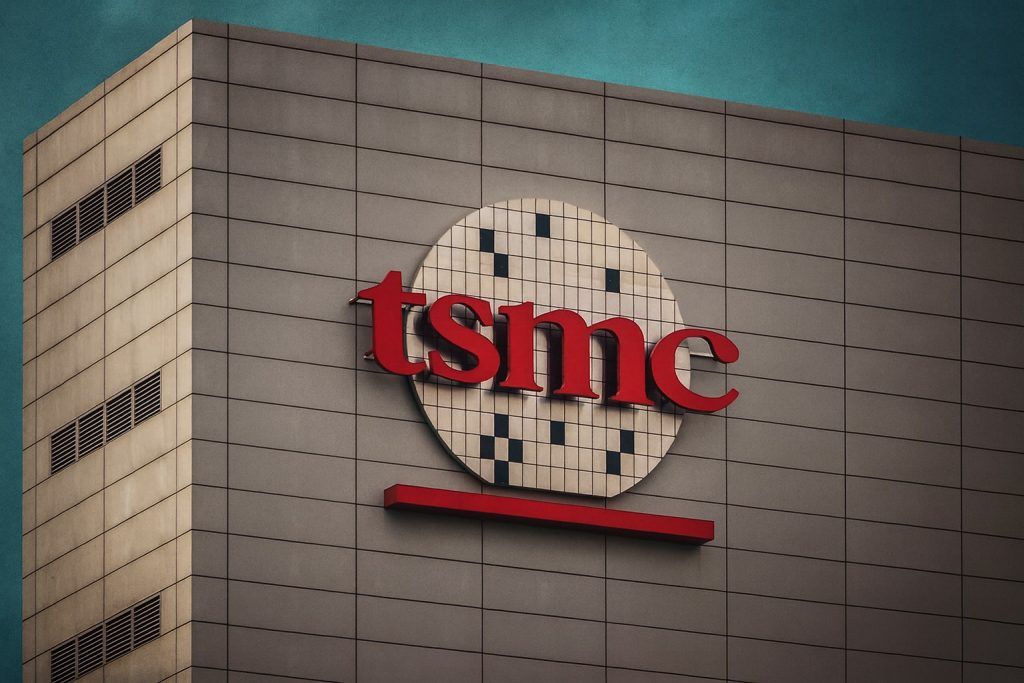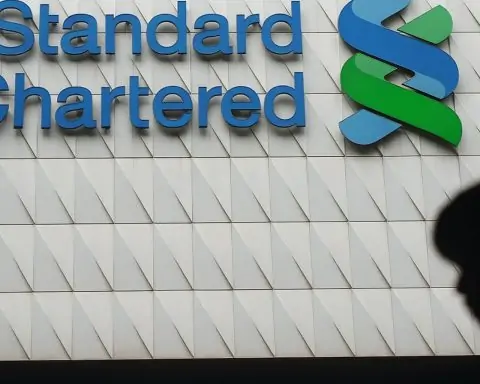- Iron-Flow Battery Pioneer: ESS Tech, Inc. (NYSE: GWH) is a long-duration energy storage company focused on iron-based flow batteries [1]. The firm (founded 2011, ~240 employees) designs and builds large-scale “iron flow” battery systems for utilities and commercial customers [2]. Its products (the Energy Warehouse, Energy Center, and new Energy Base platform) use cheap, earth-abundant iron, salt and water in the electrolyte [3]. ESS touts that its batteries are “safe and sustainable with no risk of thermal runaway” and have a 25+ year lifespan [4].
- Stock Price & Ratings: As of Oct 9, 2025, GWH stock closed around $1.72/share (market cap ≈$26 M) [5]. Wall Street’s consensus rating is Hold, with an average 12‑month price target of ~$2.67 [6]. (Notably, Roth Capital is more bullish – recently raising its target to $3.50 [7].)
- 10-Year Deal Triggers 175% Surge: On Oct 10, 2025, ESS announced a 5 MW/50 MWh iron-flow battery pilot project with Arizona utility Salt River Project (SRP) under a 10-year contract [8]. The news sent GWH shares soaring ~175% in pre-market trading (to about $4.27 a share) [9]. This “Project New Horizon” deal – delivering 10 hours of energy storage for SRP’s grid – is seen as a major validation of ESS’s technology. It garnered industry attention (Google is even helping fund SRP’s long-duration storage pilot program) [10] and catalyzed a trading frenzy in ESS stock.
- Early-Stage Financials: ESS remains unprofitable with tiny revenue (2024 sales were only ~$6.3 million [11]versus a net loss of ~$86 million [12]). That said, growth is picking up: Q2 2025 revenue jumped nearly 7× year-on-year to $2.4 M [13]. To shore up its balance sheet, ESS secured $31 M in new funding in mid-2025, boosting cash on hand to ~$7.2 M (from just $0.8 M at Q2’s end) [14]. The company is commissioning a second factory line to expand production capacity [15]. Federal incentives under the U.S. Inflation Reduction Act (IRA) – like tax credits for domestic battery manufacturing – are also bolstering its outlook [16].
- Growing Market, Fierce Competition: ESS’s iron-flow batteries target the emerging demand for long-duration (6–12+ hour) energy storage to support renewable grids. They compete with both lithium-ion (dominant for shorter ~4-hour storage) and other novel storage technologies – from zinc and vanadium flow batteries to iron-air systems [17] [18]. Rival battery startups such as QuantumScape and Solid Power (developers of solid-state EV cells) have likewise experienced extreme stock volatility as they race to commercialize next-gen batteries [19] [20]. This underlines the high-risk, high-reward nature of the sector: huge potential in the clean energy transition, but significant uncertainty in execution.
Company Overview & Iron-Flow Battery Technology
ESS Tech’s mission is to “accelerate decarbonization safely and sustainably” by delivering longer-duration energy storage solutions [21]. At its core is a patented iron-flow battery design. Unlike lithium-ion cells (which store energy in solid electrodes and can overheat or catch fire), ESS’s batteries store energy in a liquid electrolyte where iron is oxidized/reduced in a saltwater solution during charge and discharge [22]. Each system consists of modular container units filled with the iron electrolyte. Smaller 6–12 hour units (branded Energy Warehouse) serve commercial or “behind-the-meter” needs, while larger multi-container systems (Energy Center and the new Energy Base platform) target utility-scale projects needing 8–12+ hours of storage [23].
Because the electrolyte is basically iron, salt, and water – non-flammable, non-toxic, and abundant materials – ESS’s batteries are designed to avoid the safety risks and supply constraints of lithium-based batteries [24]. The company claims its iron-flow systems have no risk of thermal runaway (no fires/explosions) and can operate for 25+ years with unlimited cycling without performance degradation [25]. In essence, they trade high energy density (lithium packs more energy per weight, important for EVs) for long duration and longevity, making them well-suited for stationary grid storage where space/weight are less critical.
ESS’s business model is to manufacture these containerized batteries and sell or lease them to utilities, independent power producers, and large industrial or commercial customers seeking to store renewable energy. It has already deployed a few pilot projects – for example, a 2 MW (megawatt) iron-flow system for the Sacramento Municipal Utility District in California [26] – and is now pursuing opportunities in other regions. However, revenues are still minimal (around $6.3 M in all of 2024) and the company remains deep in the red [27]. ESS is essentially a high-tech startup betting that demand for its novel long-duration batteries will scale up as the world’s grids incorporate more solar and wind power (which require energy storage to manage their intermittency). Government policy is providing a helpful nudge: because ESS’s batteries are made with fully domestic supply chains, they are eligible for new U.S. tax credits (IRA Section 45X) and other incentives aimed at boosting energy storage [28]. These credits effectively subsidize each kilowatt-hour of storage ESS produces, improving the economics of its systems.
Recent Breakthrough: SRP Deal and Stock Surge
The catalyst for the recent frenzy around ESS was a major deal announcement in early October 2025. ESS revealed it had secured a contract with Salt River Project (SRP) – a large Arizona electric utility – to deploy a 5 MW/50 MWhiron-flow battery system as a pilot project [29]. Under this 10-year energy storage agreement, ESS will install its new Energy Base batteries at SRP’s Copper Crossing Energy and Research Center in Florence, AZ. The system will be capable of delivering 10 hours of electricity (50 MWh total, enough to power ~1,125 homes for 10 hours) [30].
This project, nicknamed “Project New Horizon,” is scheduled to have design and engineering work in 2025, with manufacturing starting in 2026 and an expected go-live by December 2027 [31]. ESS emphasizes that the installation will use over 90% U.S.-sourced content and carry no fire or explosion risk – factors that appealed to SRP as it evaluates non-lithium storage options. The pilot is part of SRP’s broader initiative to explore long-duration energy storage technologies; notably, Google announced in September 2025 that it will help fund SRP’s LDES pilot program (which includes the ESS project) [32]. This big-name endorsement from Google underscored the industry’s interest in ESS’s technology. “This Google-SRP partnership underscores strong industry support for ESS’s technology,”noted one tech news outlet [33].
Investor reaction was immediate and dramatic. On October 9, 2025 – the day the SRP deal was unveiled – GWH shares spiked roughly 13–17% during regular trading [34]. But that was just the prelude: by the next morning (Oct 10) ESS’s stock rocketed up 175% in pre-market trading, briefly touching about $4.27 (nearly triple the prior day’s close) [35]. Trading volume on Oct 10 exploded to ~78 million shares (versus an average of ~0.3 million) as excited investors piled in [36]. The stock was well above its recent range – it had spent most of 2025 between roughly $0.76 and $2 before this news [37]. In fact, before the SRP announcement, GWH was down over 70% year-to-date in 2025amid dwindling cash and dilution fears [38]. The SRP deal abruptly reversed that slide, at least temporarily, on hopes that ESS’s fortunes were turning a corner.
“SRP once again demonstrates its leadership with its commitment to non-lithium, long duration energy storage. This project is a significant validation in both the LDES industry and ESS as a technology provider.”– Kelly Goodman, ESS interim CEO, on the SRP 50 MWh pilot [39]
“As the Valley continues to see rapid growth, projects like this allow us to better understand the efficacy and impact of different kinds of LDES technologies as they mature.” – Chico Hunter, SRP Manager of Innovation, on piloting ESS’s system [40]
Analysts also weighed in on the breakthrough. In a research note, Roth Capital called the SRP contract a “key validation milestone” for ESS’s new Energy Base platform – highlighting that even Google’s involvement adds credibility [41]. On the back of the deal, Roth raised its stock price target for GWH to $3.50 [42]. Still, many on Wall Street remain cautious. The average analyst recommendation is Hold, and as of that week, the consensus price target was only around $2 (roughly where the stock traded before the SRP news) [43]. In other words, professional analysts by and large are impressed but not yet convinced – they want to see ESS turn pilot deals into steady revenues before getting more bullish.
Financial Performance & Funding Outlook
ESS Tech’s financials reflect a young company in ramp-up mode – fast-growing revenue from a very small base, significant losses, and tight cash. In Q2 2025 (reported in August), ESS achieved $2.4 million in GAAP revenue, which was a 578% increase over Q2 2024 (a mere $0.3 M) [44]. It also marked a 294% jump from the $0.6 M in Q1 2025 [45], as initial deliveries of its Energy Warehouse and Energy Center units finally hit the income statement. While $2.4 M is modest, the growth trajectory showed ESS is beginning to monetize its technology after years of development.
Losses, however, remain steep. In Q2 2025 the company still recorded about an $11 million net loss, though this was an improvement from the ~$22 M loss a year earlier [46]. Operating costs have been coming down (Q2 operating expenses of $6.5 M were 45% lower than the prior year’s quarter) [47], and gross loss also improved as production scaled a bit. ESS even noted its monthly cash burn rate has decreased by ~80% with recent cost-cutting measures [48]. But the reality is that expenses far outweigh revenue at this stage – trailing 12-month sales are around $6.2 M while the net loss over the last year was about $86 M [49].
This imbalance put ESS in a precarious cash position by mid-2025. As of June 30, 2025, the company’s cash balance had dwindled to just $0.8 M [50] – effectively on the brink of running out of money. In fact, in its filings ESS warned of “substantial doubt” about its ability to continue as a going concern over the next 12 months if it didn’t raise funds [51]. To buy time, management secured an insider-led funding package of up to $31 M in July 2025 [52]. This included an immediate equity infusion and a $25 M standby equity purchase agreement, which together brought cash on hand up to roughly $7.2 M by late July [53]. That breathing room is expected to carry ESS through the next couple of quarters, but likely not much beyond – further capital raises or incoming customer payments will be needed to sustain operations into 2026.
On the bright side, ESS is pivoting to a new product strategy that it hopes will unlock larger sales. The company’s focus going forward is on its next-generation Energy Base systems, which are designed for large-scale projects (like the SRP pilot). In fact, ESS has essentially discontinued its earlier products (the smaller Warehouse and Center units for up to 12-hour storage) to concentrate on the bigger, 12+ hour Energy Base offering [54]. This new platform is intended to provide “green baseload” power – meaning renewables plus storage that can reliably supply 24/7 energy. During Q2, ESS closed its first sale of an Energy Base system and by that time had over 1.1 GWh of project bids submitted for prospective Energy Base deals [55]. Importantly, however, the revenue from Energy Base projects won’t be realized until 2026 (the SRP project, for example, will be built over 2026–2027) [56]. Company leaders believe that if they can execute these deployments, ESS could achieve profitability within a few years [57] – but that is contingent on hitting production targets and cost reductions for the new product.
In terms of guidance, ESS has not given formal revenue or profit forecasts for 2025 (understandable, given lumpy pilot sales). Executives did indicate they expected a “back-end loaded” 2025, with more revenue in the second half as deliveries pick up [58]. Investors will be watching the upcoming Q3 and Q4 results to see if additional orders (besides SRP) contribute to sales. The key financial questions for ESS boil down to: Can they line up a steady stream of new contracts? And will they have enough cash or financing to build out these orders?
The recent stock surge itself could indirectly help on the latter question – a higher share price may enable ESS to raise capital more easily (or tap that standby equity line with less dilution). As of October 2025, ESS has a relatively tiny float (~15.1 M shares) [59], so any future equity issuance, while painful to existing shareholders, could bring in much-needed cash. The company will likely try to balance dilution against growth: raising only what it needs to reach key milestones that could, in turn, boost the stock on fundamentals (rather than just hype).
Strategic Partnerships and Production Capacity
ESS isn’t going it alone in its quest to scale up – it has formed alliances with larger players and is investing in manufacturing capacity to support growth. In September 2023, Honeywell International (NASDAQ: HON), a Fortune 100 industrial tech giant, announced a strategic collaboration and investment in ESS [60]. The partnership brings together ESS’s iron-flow battery design with Honeywell’s expertise in advanced materials, power control systems, and broad energy industry relationships. “Our strategic collaboration with ESS will accelerate Honeywell’s ability to bring comprehensive [long-duration storage] solutions to our customers,” said a Honeywell Performance Materials executive [61]. Honeywell took an equity stake in ESS and the two companies entered a joint development agreement to co-engineer the Energy Base systems [62]. In practical terms, this means Honeywell is both a partner and a potential customer – Honeywell can help improve ESS’s product design (e.g. optimizing fluid systems, modular components) and could also integrate ESS batteries into projects for its own clients. This tie-up was a strong vote of confidence in ESS’s technology, and it provides ESS access to resources and credibility it might not have on its own.
On the production front, ESS is expanding its Wilsonville, Oregon factory to meet anticipated demand. The company is in the process of commissioning a second automated battery manufacturing line (“Line 2”) at the facility [63]. This new line will incorporate more automation and focus on producing the core “Iron Core” modules for the Energy Base product. By scaling up from a pilot line to a more industrialized line, ESS expects to improve its capital efficiency and gross margins (the more units produced, the more fixed costs like factory overhead can be spread out) [64]. The shift to larger-format Energy Base units also helps – these should deliver more MWh per unit manufactured, potentially lowering the cost per MWh as volume grows. In alignment with the production ramp, ESS has hired industry veterans (for example, a new COO in mid-2025) to tighten up manufacturing and supply chain operations [65].
Regulatory trends are also working in ESS’s favor when it comes to production. The U.S. government’s push for domestic clean energy manufacturing translates into direct incentives for companies like ESS. Under the 2022 Inflation Reduction Act, battery producers can earn a Production Tax Credit (PTC) – known as Section 45X – for each kilowatt-hour of battery capacity they produce in the U.S. For long-duration batteries, this credit is substantial: it’s been estimated at roughly $90 million in tax credits for every 2 GWh of annual production capacity [66]. For a small company like ESS, credits of that magnitude can be game-changing, effectively subsidizing a chunk of their manufacturing costs. In addition, various Department of Energy grants and state-level programs are targeting energy storage R&D and pilot deployments [67], under which ESS has already benefited (e.g. receiving grants for its technology development) [68]. These policies not only improve ESS’s economics but also encourage customers (like utilities) to consider novel technologies by lowering the financial risk of trying something new. ESS’s fully domestic, non-toxic supply chain aligns well with the spirit of these incentives – it doesn’t rely on overseas lithium or cobalt, and it provides U.S. jobs, which are political pluses that can attract further government support.
Competitive Landscape in Energy Storage
ESS Tech operates in the rapidly evolving market for long-duration energy storage (LDES) – a space many see as critical for enabling a 100% clean electric grid. As solar and wind power grow, grids will need storage not just for 1–4 hours (the typical range of lithium-ion batteries today), but for 8, 10, 12+ hours to cover overnight and multi-day lulls in renewable generation. The opportunity is enormous: one industry analysis projected the U.S. may need on the order of 140 TWh (terawatt-hours) of long-duration storage by 2040 to reach net-zero carbon goals, and Europe may need ~20 TWh by 2040 [69]. Another report estimated that achieving such LDES deployment could require $330 billion of investment by 2030 globally [70]. These eye-popping numbers illustrate why so many companies (and investors) are interested in the field – whoever cracks the code on cost-effective, scalable long-duration storage stands to ride a massive wave of demand.
Competition is fierce and diverse. ESS is not alone in pursuing multi-hour energy storage solutions beyond lithium-ion. A number of startups and technologies are vying for the role of “best long-duration battery,” including:
- Form Energy – developing iron-air batteries that can ostensibly store energy for 100 hours by rusting and unrusting iron pellets [71] (a different chemistry than ESS’s iron-flow, but also using iron). Form Energy has high-profile backing and its first projects (100-hour batteries for a Minnesota utility) are slated for 2026.
- Zinc-Based Batteries – companies like Eos Energy (zinc hybrid cathode batteries) and Invinity Energy Systems(zinc-bromine flow batteries) offer alternatives that use zinc chemistry for 6–10 hour storage. These are also in pilot stage, with Eos (NASDAQ: EOSE) pursuing projects similar in scale to ESS.
- Vanadium Redox Flow Batteries – a more established flow battery tech using vanadium dissolved in liquid electrolyte. Firms like Invinity (LSE: IES) and others build these systems. Vanadium flow batteries have been around for decades and work reliably for long durations, but vanadium metal is expensive and the acidic electrolyte is toxic/corrosive [72], which drives up cost and complexity. ESS’s iron electrolyte, by contrast, is cheap and benign [73].
- Thermal and Gravity Storage – outside the electrochemical realm, there are technologies like thermal energy storage (heating salt or other materials and later converting that heat to power) and gravity-based storage (lifting heavy weights or pumping water uphill, then releasing to generate power). Companies like Energy Vault (gravity) and various molten salt storage firms fall here. These target very long-duration storage as well, but are very different approaches from batteries.
In shorter-duration markets (up to ~4 hours), lithium-ion batteries still dominate due to their huge head start in cost reduction and deployment. But industry experts note that beyond about 6–8 hours of storage, lithium-ion becomes economically challenged – you need so many battery packs that costs multiply, and there are diminishing returns [74]. That’s where alternatives like ESS’s iron-flow battery aim to out-compete lithium on a cost-per-kWh basis for longer needs. In fact, many utilities are now explicitly seeking non-lithium options for 8+ hours due to concerns around lithium-ion’s fire risk, cycle life, supply chain and cost at large scale [75] [76]. The SRP project is a case in point: SRP’s manager of innovation said they want to evaluate different LDES techs as they plan to “at least double” their power resources in the next decade [77].
ESS argues its iron-flow solution has a few distinct advantages in this competitive landscape. First, simplicity and safety: the electrolyte is basically saltwater with iron, so it’s non-flammable and non-toxic, unlike the acid in vanadium flow batteries or the high-pressure oxygen in some metal-air batteries [78]. This means ESS systems can be sited near communities with less risk. Second, the cost of materials is low – iron saltwater is inexpensive and abundant, whereas vanadium is costly and lithium faces supply constraints [79]. Third, ESS’s technology has been proven at small scale in real-world deployments (e.g. the 2 MW system in California), giving it a credibility boost [80]. The company has also garnered grants and partnerships (e.g. with the U.S. Department of Energy and state energy agencies), which a recent industry newsletter cited as evidence that ESS (along with peers like Eos and Invinity) is among the “leaders” in long-duration storage development [81].
That said, the race is still wide open. It’s worth noting that the long-duration storage market is only just beginning to materialize – most grid battery installations to date have been lithium-ion for 4 hours or less. A 2024 DOE study remarked that the market for 10+ hour storage is in its infancy, with just pilot projects here and there [82]. Utilities tend to be cautious and slow-moving, given their mandate for reliability. ESS’s interim CEO has even implored utilities that “now is not the time to hesitate” in testing long-duration storage solutions [83], essentially acknowledging that many potential customers are still sitting on the fence. Over the next few years, a handful of high-profile LDES projects (like ESS’s SRP system, Form Energy’s iron-air projects, and others) will likely serve as bellwethers – if they perform well (hitting cost and performance targets), it could unlock a flood of orders; if they disappoint, it could set the sector back.
Market position: At the moment, ESS Tech is one of a pack of contenders in a nascent market. It doesn’t have the field to itself, but it has a differentiated approach (iron-flow) and some early mover advantages in deployments. Its partnership with Honeywell and inclusion in programs like SRP’s give it a degree of validation that some others lack. However, competitors like Form Energy remain private and very well-funded, and even public rivals like Eos have larger market caps (Eos is valued around a few hundred million dollars as of 2025, versus < $100 M for ESS). The coming 1–2 years – as companies scramble to secure pilot contracts and scale manufacturing – will be critical in determining which technologies gain commercial traction.
It’s also instructive to compare ESS with the broader set of battery tech startups that went public via SPAC in recent years – including EV battery developers like QuantumScape (NYSE: QS) and Solid Power (NASDAQ: SLDP). Those companies target electric vehicle batteries (solid-state lithium metal cells) rather than grid storage, so they’re not direct competitors product-wise, but they compete in the investor arena for attention and capital. All three (ESS, QS, SLDP) had sky-high valuations post-SPAC amid hype for “the next big battery,” and all three saw reality set in as timelines proved lengthy. QuantumScape’s share price famously soared above $100 in late 2020, only to tumble below $20 by 2022. Solid Power likewise traded in the mid-teens after its 2021 debut, then fell under $2 by mid-2025. Interestingly, both QS and SLDP have enjoyed a revival in late 2025: Solid Power’s stock, for example, hit a new 52-week high of $6.33 in October 2025 after successful EV battery tests – a 350%+ climb from its lows [84]. QuantumScape too saw a surge (it jumped ~55% in September 2025 on development news). These wild swings show how sentiment can whipsaw in the battery sector. ESS Tech’s own ride – from an all-time high equivalent to over $280/share in 2021 down to penny-stock levels (~$1–2) by 2025 [85], and then a sudden 10x intraday spike on a single deal – exemplifies this volatility. The bottom line: in this market, technological progress (or setbacks) and news flow can dramatically move stocks, long before profits materialize.
Analyst Views & Investor Outlook
From an investment perspective, ESS Tech presents a high-risk, potentially high-reward profile that differs depending on your time horizon.
Short-term traders have clearly taken note of the stock’s explosive potential. A one-day 175% gain is the kind of move traders dream about, and it highlights that ESS can rally on momentum and headlines rather than fundamentals. However, what rockets up can just as easily crash down. Such extreme volatility means short-term players could just as easily see sharp losses if sentiment turns or if the company issues new shares. It’s worth remembering that even after the recent pop, ESS was still trading more than 75% below its 52-week high (around $10 in late 2024) and over 99% below its peak immediately post-IPO [86]. In the days following the SRP news, some profit-taking or pullback would not be surprising given the magnitude of the jump. Additionally, the low float (relatively few shares available) means the stock can be whipsawed by speculation. Short-term, ESS is essentially a story stock – it will trade on news about new deals, technology updates, or policy changes (e.g. any hint of another big contract could send it soaring again, while delays or dilution could sink it). Traders dabbling in GWH should be prepared for a bumpy ride and possibly use risk management tools (stop-loss orders, hedging, etc.) if they try to capitalize on its swings.
Long-term investors in ESS have a different calculus: they’re betting that the company’s iron-flow batteries will carve out a significant share of the future energy storage market, delivering outsized growth over a 5–10 year horizon. The bullish long-term thesis is not far-fetched – the total addressable market for grid storage is massive, and if ESS’s technology truly scales (meeting performance and cost targets), the company’s revenues could grow exponentially. A single large project can be tens of millions in revenue; for instance, a 50 MWh system like the SRP pilot might be on the order of ~$20–30 M in value. If ESS starts booking multiple such deals annually, it could go from sub-$10 M revenue to hundreds of millions in a few years. There is also the prospect of recurring revenue if ESS employs an “energy storage-as-a-service” model or long-term maintenance contracts. Furthermore, with government support and partnerships (Honeywell, etc.), ESS could punch above its weight in reaching customers.
That said, the long-term bull case comes with considerable caveats. The timeline for adoption is protracted – as noted, the SRP project won’t even be fully online until late 2027 [87]. Utilities move slowly, and validation of technology at scale takes time. This means years of execution risk. ESS will need to scale up manufacturing, manage its supply chain, and continuously improve its batteries’ performance and cost to stay competitive. All of that will likely require additional capital; unless the stock price stays high enough to raise funds cheaply, that could mean more dilution or debt. In the worst case, if orders don’t materialize as expected or the technology fails to live up to expectations, ESS could run out of money – the company’s own filings acknowledged substantial doubt about survival at one point [88]. The good news is recent funding and the high-profile SRP win mitigate that risk in the near term, but it has not vanished entirely.
Wall Street’s cautious stance reflects these uncertainties. The average analyst price target (around $2) [89]essentially suggests the stock is fully valued after the latest spike – in other words, analysts aren’t projecting huge upside from here unless ESS secures more breakthroughs. Among the small pool of analysts covering GWH, the most optimistic (Roth Capital) targets ~$3.50 [90], while others are closer to $1.50–$2, and the consensus is a Hold. That consensus could shift upward if ESS logs additional sales or strategic wins in the coming quarters. Conversely, any stumble (for example, if a key project were to be canceled or if Q4 results show delays) could prompt downgrades. Essentially, Wall Street is in “wait-and-see” mode – acknowledging ESS’s potential but not fully pricing in success until more proof arrives.
For short-term oriented investors, ESS might be treated as a speculative trade on news catalysts. For long-term oriented investors, it can be viewed as an equity stake in a promising but unproven technology. In that sense, it almost resembles a venture capital investment – one must be willing to tolerate the possibility of losing most of the investment if things go wrong, in exchange for the possibility of multi-fold returns if iron-flow batteries become a mainstream solution.
Bottom Line
ESS Tech’s recent sprint in the stock market highlights the company’s enormous promise as well as the market’s fickle nature. The promise: a safer, longer-lasting battery technology that could play a pivotal role in a clean energy future, potentially rewarding investors handsomely if the company scales up. The peril: a tiny company burning cash in a competitive, early-stage industry, with significant execution and financing risks ahead. In the coming months and years, keep an eye on key milestones: the progress of the SRP project (on-time delivery will build credibility), any additional contracts or partnerships (especially repeat orders from existing customers or deals in new regions), and the company’s financial runway (cash burn vs. new funding). Also watch the competitive field – if a rival technology makes a breakthrough or if a big player enters the fray, it could alter the trajectory for ESS.
For now, ESS Tech, Inc. stands as one of 2025’s most striking stories in the renewable energy stock space – a tiny battery stock that suddenly isn’t so tiny, riding a wave of optimism that it just might have a piece of the solution to one of the energy grid’s toughest problems. Investors must decide if that optimism is justified or overcharged, but there’s no denying that ESS will be a company to watch as the long-duration storage race accelerates.
Sources: Key company information from official filings and press releases【42†[1]】【45†[6]】; news and analyst commentary from Tech Space 2.0 [91] [92], Utility Dive [93] [94], TipRanks [95] [96], Investing.com [97] [98] and others; financial data from StockAnalysis/Yahoo Finance [99]; industry context from Canary Media and C&EN analyses [100] [101]. All linked citations provide additional details and have been referenced in context above.
References
1. ts2.tech, 2. ts2.tech, 3. ts2.tech, 4. ts2.tech, 5. ts2.tech, 6. ts2.tech, 7. ts2.tech, 8. ts2.tech, 9. ts2.tech, 10. ts2.tech, 11. ts2.tech, 12. ts2.tech, 13. www.energy-storage.news, 14. ts2.tech, 15. www.investing.com, 16. ts2.tech, 17. ts2.tech, 18. ts2.tech, 19. www.energy-storage.news, 20. markets.financialcontent.com, 21. ts2.tech, 22. ts2.tech, 23. ts2.tech, 24. ts2.tech, 25. ts2.tech, 26. ts2.tech, 27. ts2.tech, 28. ts2.tech, 29. ts2.tech, 30. ts2.tech, 31. ts2.tech, 32. ts2.tech, 33. ts2.tech, 34. ts2.tech, 35. ts2.tech, 36. ts2.tech, 37. ts2.tech, 38. ts2.tech, 39. www.tipranks.com, 40. www.utilitydive.com, 41. ts2.tech, 42. ts2.tech, 43. www.tipranks.com, 44. www.energy-storage.news, 45. www.energy-storage.news, 46. www.investing.com, 47. www.investing.com, 48. www.investing.com, 49. ts2.tech, 50. www.investing.com, 51. www.energy-storage.news, 52. ts2.tech, 53. ts2.tech, 54. www.energy-storage.news, 55. ts2.tech, 56. www.energy-storage.news, 57. www.energy-storage.news, 58. www.investing.com, 59. ts2.tech, 60. www.honeywell.com, 61. www.honeywell.com, 62. www.investing.com, 63. www.investing.com, 64. www.investing.com, 65. ts2.tech, 66. ts2.tech, 67. ts2.tech, 68. ts2.tech, 69. ts2.tech, 70. ts2.tech, 71. ts2.tech, 72. ts2.tech, 73. ts2.tech, 74. ts2.tech, 75. www.tipranks.com, 76. www.utilitydive.com, 77. www.utilitydive.com, 78. ts2.tech, 79. ts2.tech, 80. ts2.tech, 81. ts2.tech, 82. ts2.tech, 83. ts2.tech, 84. markets.financialcontent.com, 85. www.energy-storage.news, 86. www.energy-storage.news, 87. www.utilitydive.com, 88. www.energy-storage.news, 89. www.tipranks.com, 90. ts2.tech, 91. ts2.tech, 92. ts2.tech, 93. www.utilitydive.com, 94. www.utilitydive.com, 95. www.tipranks.com, 96. www.tipranks.com, 97. www.investing.com, 98. www.investing.com, 99. ts2.tech, 100. ts2.tech, 101. ts2.tech








